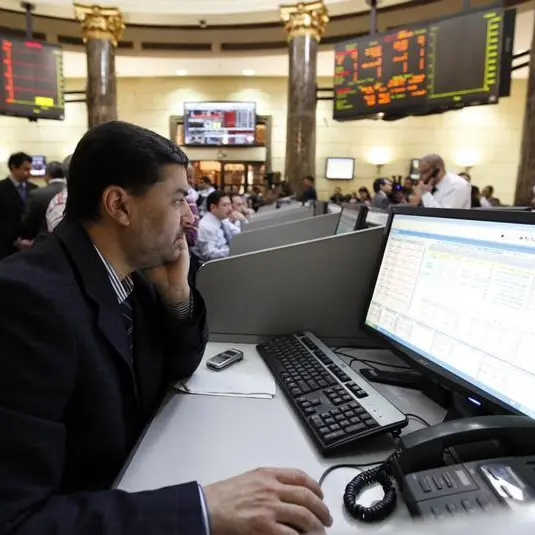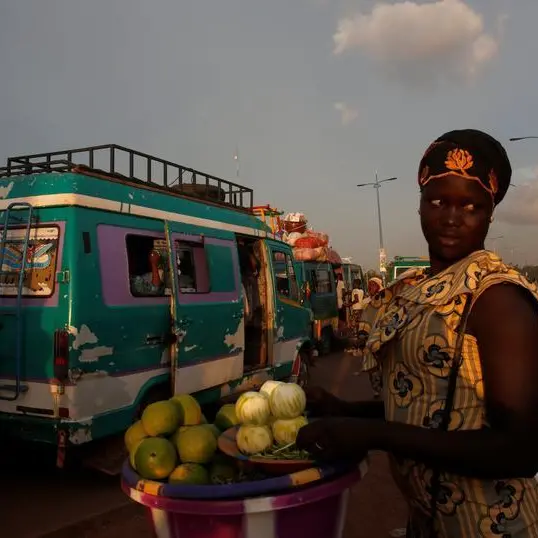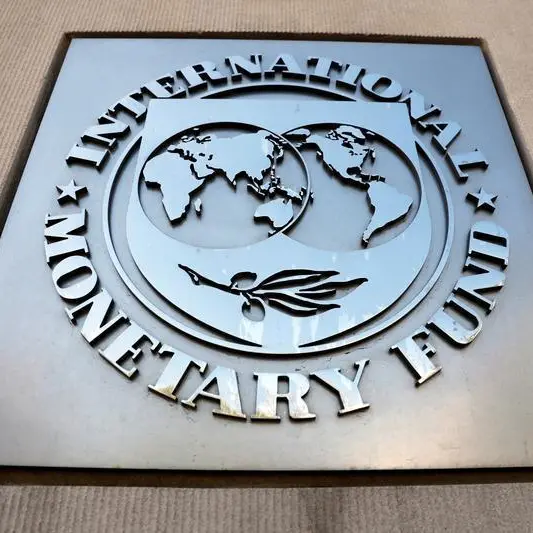Welcome to Zawya Markets. Each Sunday we will be featuring an interview with a different analyst or markets expert from around the region.
If you would like to participate please email gerard.aoun@refinitiv.com.
1) How have frontier markets performed compared to their emerging and developed peers since the start of 2019?
Our broader definition of frontier markets includes smaller, less developed and under-owned emerging markets. Together, these constitute a benchmark of 28 diverse countries that extend from Argentina in the west to Philippines in the east. Accordingly, frontier markets, as represented by the MSCI Frontier Emerging Markets Select Countries Capped Index, have returned 8.5 percent in United States dollar terms in the year-to-April 2019 period.
In comparison, emerging markets (MSCI Emerging Markets index) and developed markets (MSCI World Index) have gained 12.3 percent and 16.7 percent, respectively.
Within the index, Egypt, Bahrain, Kenya and Colombia were among the leading performers, returning in excess of 20 percent. Egypt’s structural reform continues to unlock growth, while declining inflation enabled the Central Bank to cut interest rates. Improving macroeconomic data, including better-than-expected fourth-quarter GDP growth, supported the Colombian market. In Kenya, the banking sector benefitted from a court ruling annulling a banking law that capped lending interest rates.
2) What could be the main challenges facing MENA frontier markets in the next weeks/months?
Key challenges facing the MENA region include a deterioration in regional geopolitics that could dampen global investor sentiment, while a sustained drop in oil prices might stymie government spending plans and fiscal reform commitment.
Our view, however, is that governments in the region have collectively shaved around $15-20 a barrel off their breakeven oil prices due to the reforms implemented already which, alongside massive wealth reserves and relatively low debt levels in aggregate, gives them space to run their economies counter-cyclically. In the long-term, the need to balance government desire for continued growth with a commitment to continuing reforms that create more diversified and therefore, sustainable economies, is key.
Despite the uncertainty surrounding global equity markets this year, we see a combination of solid fundamentals and significant liquidity drivers as an opportunity for MENA investors. We anticipate a sizable flow of foreign capital to accompany MSCI index inclusion in Saudi Arabia, and a potential market review in Kuwait, along with continued fiscal reforms, rising corporate earnings and relatively attractive valuations in specific parts of the market.
3) Which frontier markets sectors have particularly done well in 2019? And why?
Sectors in the MSCI Frontier Emerging Markets Select Countries Capped Index which have performed particularly well in the first four months of the year include IT (although this is a little misleading since there is only one IT company in the index, which appreciated by close to 50 percent), real estate, financials and communication services. The IT company benefitted from higher demand for digital services in the US and other key markets and favourable foreign exchange trends that improved margins.
The performance in the real estate sector was driven by property and mall developers in Vietnam and the Philippines. Both countries are seeing solid property demand driven by urbanisation, higher disposable income and better accessibility due to more affordable mortgages. Modern retail penetration levels remain relatively low, but we are seeing a rapid transition from traditional to modern retail channels. Demand is driven by the young and fast-growing labour force, making it a good proxy for domestic consumption growth.
4) Egypt is one of the world’s 30 fastest growing economies in terms of GDP growth, what is your view on the country?
We remain positive on Egypt. The country has been reaping the benefits of having implemented a significant reform agenda and a massive currency devaluation. Fiscal consolidation, supported by subsidy cuts and more comprehensive tax revenues, have restored confidence in its medium-term economic outlook. GDP growth is expected to reach 5.5 percent this year, the highest level in 10 years, supported by investment catch-up after years of underinvestment and an expanding population.
We believe the equity market offers exposure to a secular, multi-year growth story. Moreover, we expect the market to benefit from lower inflation, resulting in lower rates and higher disposable income as wages continue to readjust.
5) Frontier markets provide the highest dividend yield compared to their emerging and developed peers, is the reason behind that a higher associated risk?
As of end-April, FMs (MSCI Frontier Emerging Markets Select Countries Capped Index) had a dividend yield of 3.7 percent, compared to yields of 2.7 percent and 2.4 percent for emerging markets (MSCI Emerging Markets Index) and developed markets (MSCI World Index), respectively. A higher dividend yield in frontier markets tends to be a function of lower valuations, lower leverage, higher margins and better cash flow. There is also a strong dividend culture in many frontier markets.
The key risks for the asset class are the quality of the institutions, the ease of doing business and market access/liquidity. We believe that the best way to mitigate these risks is to build an on-the-ground investment team that brings deep understanding of local markets in which they live. We think that this operating model is particularly suited to markets as complex and under-researched as frontier markets.
7) The Kuwaiti index may be added in June to the MSCI emerging market index, what is your position on Kuwait?
We remain constructive on the outlook for Kuwait. The country has already been added to the FTSE Emerging Markets Index and is on MSCI’s watchlist, with an announcement for upgrade expected shortly. Should Kuwait be included in the MSCI index, we expect more than $2 billion in passive flows into the country, with the increase in liquidity supporting market performance. The country has also been working on reforming its capital markets and improving corporate governance standards. The sovereign is AA-rated, supported by ample reserves and low debt levels, providing a cushion as the government focuses on diversifying its economy and reducing its dependence on oil, while reforming expenditure and the job market. The government has also set ambitious 2035 targets involving heavy infrastructure spending and a focus on education and healthcare, while improving transparency and efficiency in the government.
8) Which MENA frontier market and non-MENA frontier markets are your top picks for 2019?
We have identified Saudi Arabia, Egypt and Kuwait as our top MENA picks, while Vietnam, the Philippines and Colombia are favourites in non-MENA frontier markets.
Saudi Arabia has made significant strides over the past 3 years, all of which only strengthen its long-term investment case. The Saudi Arabian market has also been showing signs of recovery as corporate earnings improve and analyst estimates are revised upwards. Significant demand for recent international bond issuances by Aramco and the government highlights the ability of the kingdom to attract foreign capital. Additionally, foreign ownership levels in the Saudi Arabian stock market are at a record high, and we expect the phased inclusion of Saudi Arabia in the MSCI Emerging Markets index to drive significant further flows.
As mentioned, we remain positive on Egypt and constructive on the outlook for Kuwait.
Vietnam and the Philippines have strong economic and demographic fundamentals. Both countries are among the fastest-growing globally and are expected to continue to generate solid GDP growth for the foreseeable future. Vietnam has successfully increased investment in industry and construction, as well as services such as financial services and hospitality, while we have seen increasing infrastructure spending in the Philippines. Growth in domestic consumption on the back of a large and fast-growing young labour force also bodes well for both economies. In the case of Vietnam, we have also seen renewed appetite from companies wanting to relocate their manufacturing presence from China, given the latter’s deteriorating trade relationship with the U.S.
The Colombian market stands to benefit from strengthening economic fundamentals and a market-friendly government that was elected last year. Recent trends point to increasing consumption on the back of a tax reform bill. Market valuations remain attractive in view of a recovery in earnings, while local portfolio flows have also been supportive, driven by pension funds increasing their allocation to domestic equities.
8) Oman’s stock market is one of the worst performers in the region since the start of 2019, what is your view on Oman?
We are more cautious on Oman given concerns around the country’s vulnerable fiscal position and the deterioration in its credit profile. Oman’s economy has been struggling since the collapse of oil prices in 2014, forcing the government to tap international debt markets to plug budget shortfalls. The government has also been slow to implement fiscal reforms, despite dwindling reserves. The country’s fiscal deficit is expected to remain at an average of about 8.7 percent over the next four years, according to S&P. Moreover, S&P recently cut its outlook on Oman to negative from stable, while Moody’s downgraded Oman’s credit rating to junk status. We believe that Oman needs fiscal consolidation to mitigate its growing debt. However, the scope for consolidation could be limited by the government's economic and social stability objectives.
9) Lebanon’s stock exchange was suspended twice from trading earlier this month following a strike from Central Bank workers. How do you see the economic situation in Lebanon going forward?
Lebanon announced the formation of a government on January 31, ending over eight months of wrangling amid heightened fears of a major economic collapse. Prime Minister Saad Hariri warned that the economy was at risk of collapsing and pledged to enact tough belt-tightening measures. The government now aims to reduce the fiscal balance by 5 percent over the next five years and attract $11.6 billion of investments that were committed during the CEDRE conference last year. The investments are, however, contingent on the implementation of fiscal, structural and sectoral reforms. There has been some push back on austerity measures and it remains to be seen how effectively the government can implement key reforms including raising taxes on interest income and approving a plan to restructure the country's electricity sector. There is a consensus forming on the necessity of reforms among political leaders, but execution risk remains high given fragmented political interests. The IMF expects real GDP growth to be between 1.3 percent and 2 percent in 2019 and 2020, respectively, compared to a growth rate of 0.3 percent in 2018. Any steps towards bringing in fiscal reforms could also attract investment from international multilateral agencies. If successful, these efforts could result in higher growth prospects in the medium-to-longer term. We remain cautious on the prospects for the Lebanese economy until we see tangible signs of progress.
10) With Tadawul joining the MSCI emerging markets index this month, what position do you advise investors to take in Saudi Arabia?
While the Saudi market is expected to benefit from MSCI inclusion flows, we maintain our fundamental preference for quality franchises with growth prospects in the consumer, healthcare, banking and insurance sectors. We believe that the consumer sector will benefit from the reinstated allowances/bonuses for public sector employees and social support for Saudi citizens. Consumers have also adjusted to the value-added tax which was implemented last year. Further, consumer retail companies could benefit from consolidation in the marketplace owing to multiple headwinds faced by the unorganized players. Strong capacity expansion pipeline in an under-supplied market and a growing preference for private healthcare should support companies in the health care sector. The banking sector is well positioned to benefit from the resumption of government spending (helped by lower fiscal deficits) on infrastructure/mega-projects and re-leveraging by consumers, particularly through mortgage borrowing. Improvement in pricing power for market leaders, consolidation and expansion in addressable markets through regulatory enforcements also bodes well for insurance companies.
(Editing by Gerard Aoun and Michael Fahy)
Any opinions expressed here are the author’s own.
Disclaimer: This article is provided for informational purposes only. The content does not provide tax, legal or investment advice or opinion regarding the suitability, value or profitability of any particular security, portfolio or investment strategy. Read our full disclaimer policy here.
© Opinion 2019












